Cold weather food for those long nights of winter, Classic Beef Stew & Dumplings is…
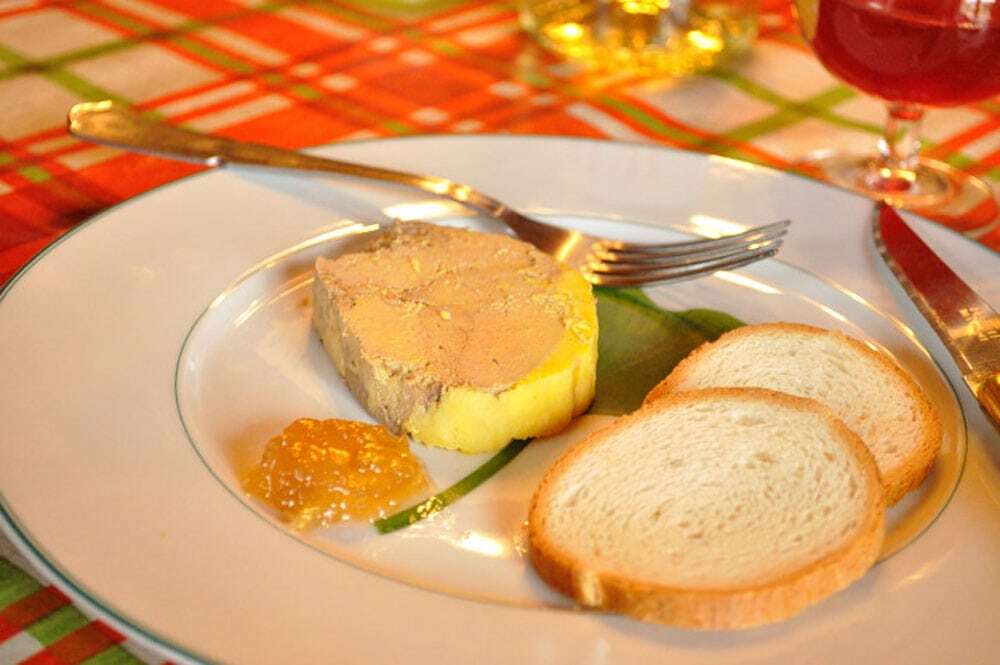
Foie Gras – Pure and Simple
The making of foie gras is a simple, though messy process. The fattened liver is soft and breaks apart easily, so each step must be handled with care and precision. Unless you’ve attended culinary school or worked in the industry, chances are you’ve never seen foie gras being prepared before, so here is a rare peek at four kilos of pure, sweet, fat duck liver as it becomes foie gras.
“Foie Gras: Goose or duck liver that is enlarged by methodically fattening the bird.”
~ Larousse GatronomiqueThe description in no way captures the decadence that is foie gras. Be it cooked, semi-cooked, pasteurized or preserved, foie gras is a subtle delicacy; slightly bitter, smooth and creamy. It has a taste that is unique, buttery and rich.
There is little the Chef in my life, Chef B. (Benoit Gelinotte) enjoys more than having his hands slippery with duck fat. He set about the three days task of curing the four kilograms (8.8 pounds) of foie gras needed for the Gelinotte family gathering in France, with a glass of wine and a little sigh. The debate of just how much foie gras was enough for this dinner party was a topic that resurfaced (again and again) until the party was over and all were sufficiently fed. You will be happy to know that (as predicted) , there was enough. There were even foie gras leftovers, which it seems, was a problem easily solved.
The first step in making Foie Gras au Torchon (Foie Gras in a Towel) is a quick lesson in the anatomy of the liver. The liver is divided into two lobes, upper and lower. There is a central nerve and vein line that extends from the top of each lobe in a spidery network branching into three, that you can easily see with the eye.
Using the point of a very sharp, thin blade, he gently split the lobe and carefully removed all tubes, veins and nerves, from the top of the lobe, downward. Working with is hands, he traced the flow of the vein with his fingers, and removed any coarse, unpalatable membrane.
This is a delicate process, great care is taken to keep pieces in larger chunks. This helps the torchon hold it’s shape, lends visual appeal and aids in fat retention. Foie gras is all about the fat, smaller pieces tend to loose more fat, so keeping the liver as intact as possible helps to retain the natural richness of the meat.
Once the lobes were open and de-veined, he layed them flat, with the soft, inside bits sunny-side up, and seasoned the liver liberally with sea salt and fresh, ground pepper. Allowing them to stand a few minutes, he then doused them in tawny port and cognac, until tiny pools of amber gold liquid formed in the hallows between the fleshy bits. Then the seasoned liver was left, covered to marinade in the cool of the cellar for a day as they soaked, absorbed and preserved in alcohol.
The next day we layered sheets of plastic wrap and laid out the pieces of liver to get it ready to roll. Chef B likes to lay the larger chunks on the bottom, membrane out, to form the outside of the roll, layering the smaller chunks on the inside. He then wraps it tight, tying off the ends, and punctures the plastic wrap with the tip of his knife to allow any air bubbles to escape as he rolls it round on the surface of the table.
Using a couple of his mother’s good cotton dishtowels (that were sacrificed for the cause) he then rolls the foie gras, tieing off the ends with butchers twine to form a tight tube about three inches across. It took two of us to keep the pressure consistent and tie off the torchon, keeping it nice and tight. The tighter the tie, the better, it helps keep the flesh compact so it’s easier to cut.
The two torchons were then chilled overnight to allow the meat to continue to marinade.
The following day he poached both loaves of foie gras, at exactly 70*C (150* F), allowing approximately 4 minutes for every 100 grams, as the fat began to melt. (You can see the light film of duck fat on the top of the water, as it escapes the torchon.)
Our Chef B stood by the poacher as the torchon cooked, never leaving it’s side, gently bathing them in hot water, rolling each from time to time to ensure the foie was cooked through. He then removed the hot foie gras and allowed it to cool fully in the cellar for 24 hours, allowing excess fat to drain, and the meat to firm before removing the wrap, cutting and serving.
In the third photo you see Chef B has a jar of hot water beside him, to dip his knife and clear the blade. Cutting is always easier with a warm, clean knife, it helps to make a clean, smooth slice.
As we feasted on foie gras for the next several days we enjoyed it with quince jelly, onion confit, a savory fig and walnut compote and simple toast rounds. The combination of fruit and and foie is very appealing, it accents the richness and underscores the natural purity of meat.
A word to the food enthusiast…
Before you go off all excited, to do your own foie gras at home you should know: raw foie gras liver reeks. There are no two ways to put it, in it’s raw form foie gras has a distinct, pungent smell that will fill your kitchen. The process itself (if you don’t know what you’re doing) can be a big mucky mess, so an apron is a good idea. And it takes at least 48 hours (a batch this big took 36, but it is essentail to marinade 24 hours and cool at least 8), this is not something you just whip up for a dinner party, it’s essential that you plan ahead.
Some of us love that raw smell, we live for it’s intoxicating, barnyard aroma. We love how soft and smooth our hands are when they have been immersed, for hours in delicious fat. Such is the art of foie gras, it is an act of simplicity and purity.
A note on Foie Gras:
Foie gras farming is the topic of hotly contested debate and sanctions, I would be remiss as a writer if I did not touch on this highly polarized topic, at least briefly It’s a hotbed of culinary of discussion, with very strong opinions on both sides. In 2006 the City of Chicago, IL famously banned serving foie gras only to repeal that decision two years later. The State of California recently enacted a section of the Health and Safety code that (effective July 1, 2012) prohibits “force feeding a bird for the purpose of enlarging the bird’s liver”.
Some site cruelty, and yes, like any industry there are good and bad producers. Those who know the product well however, will tell you that foie gras production must be humane for the bird to flourish. Like most animals, a stressed bird does not digest and fatten, therefore it behooves the farmer to take great care, so they can deliver quality product.
The higher the quality, the higher the price, this tends to weed out those not producing ethically, by natural selection. Simply put poor product doesn’t sell. As a general rule we avoid product from Israel and Hungary where regulations are loose and the product is mass produced instead favoring product from France, Spain, and Canada where production is more closely monitored and treated as an art form.
Those fowl that are currently force fed (a practice know as “gavage” where a tube is inserted in the mouth and down the neck of the bird), are generally fed by hand, handled by the same person day after day. In modern gavage-based foie gras production, force feeding takes place only 12–18 days before slaughter.
However, the new trend in modern foie gras farming is not to use gavage methods at all, but instead to allow the bird to move into it’s natural cycle and do what it does instinctually — gorge.
When temperatures begin to fall and winter approaches, ducks and geese (in the wild, or in captivity) begin to feed heavily to satisfy their increasing appetite. This is nature’s protection against the chill of the coming months. What farmers are now learning is that when left to their own devices, ducks and geese will naturally consume as much grain as they can get in the fall, thus engorging their liver naturally. Then harvest becomes a question of timing. Some of the finest foie gras in production today is farmed and harvested this way. If this topic interests you, check out Dan Barber’s TED TALK – The Foie Gras Parable.
Source: Foie Gras… A Passion, By Michael Ginor
If you’re not a fan of foie gras, my opinion, or those of Martin Picard, Anthony Bourdain and Micheal Ruhlman are not going to convince you otherwise. If you do not approve, then by all means; don’t buy it, don’t eat it and don’t order it off the menu. In our household we enjoy foie gras on special occasions and will continue to do so, purchasing ethically farmed, humanly handled product. Bon Appétit.
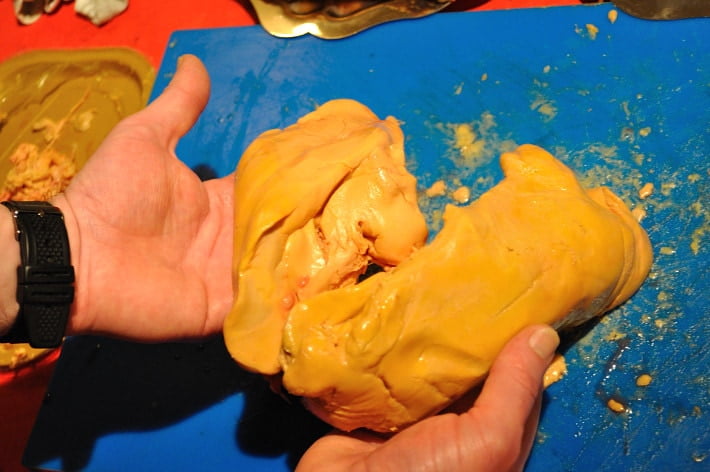
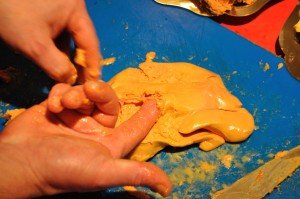
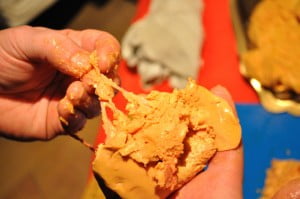
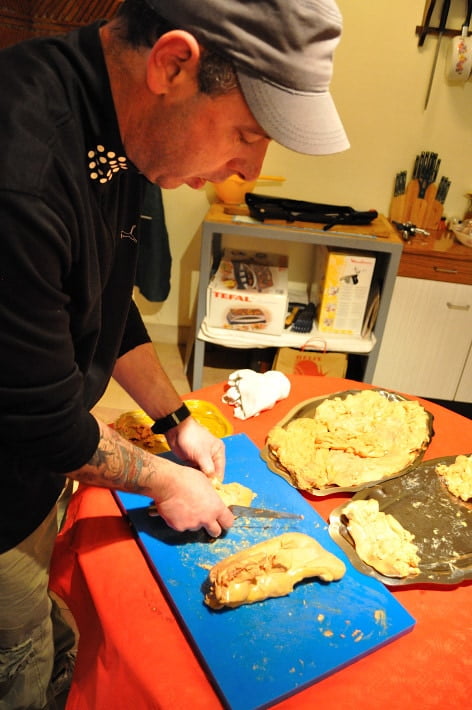
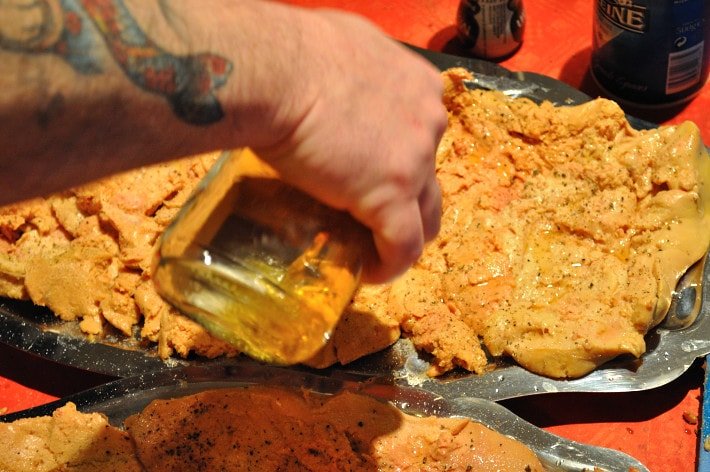
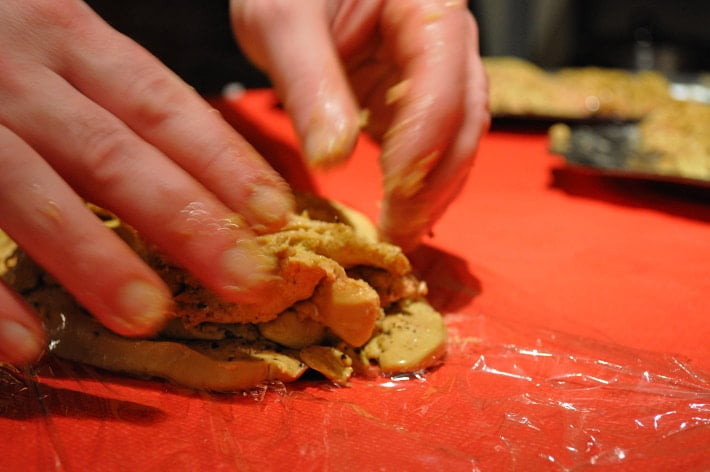
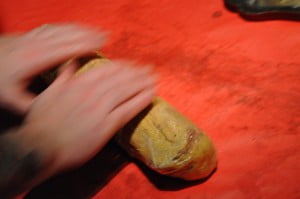
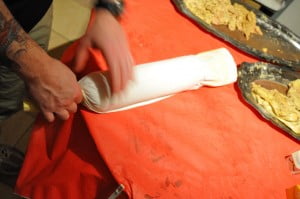
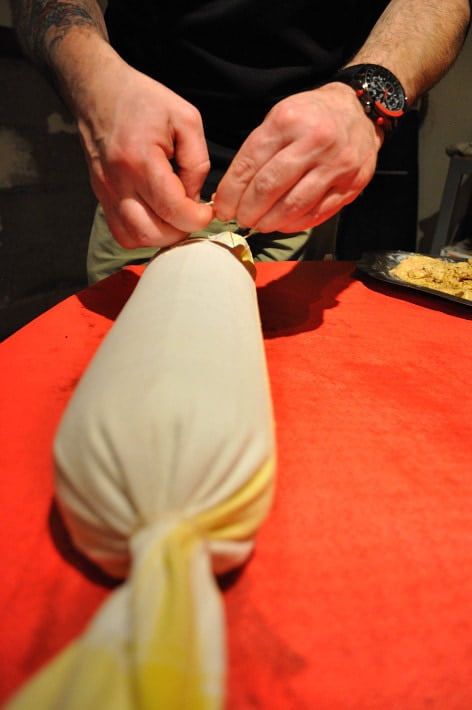
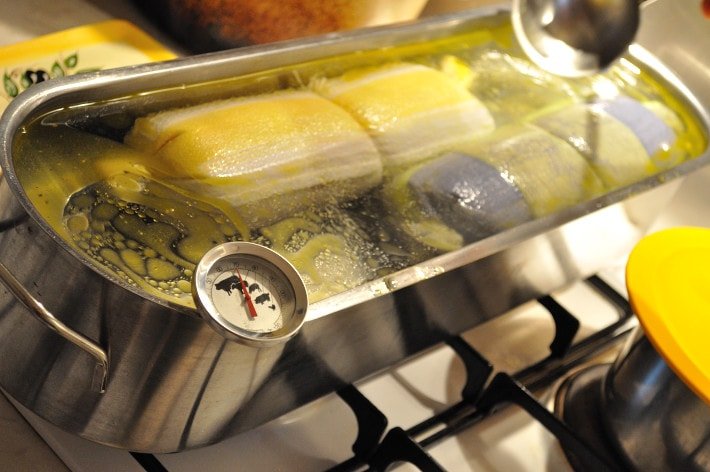
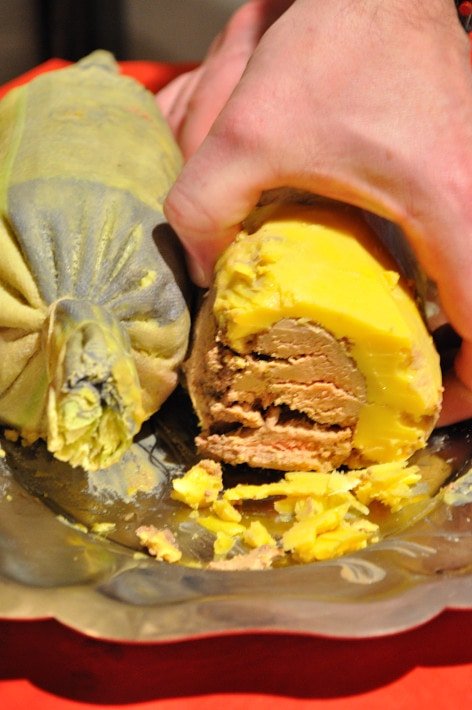
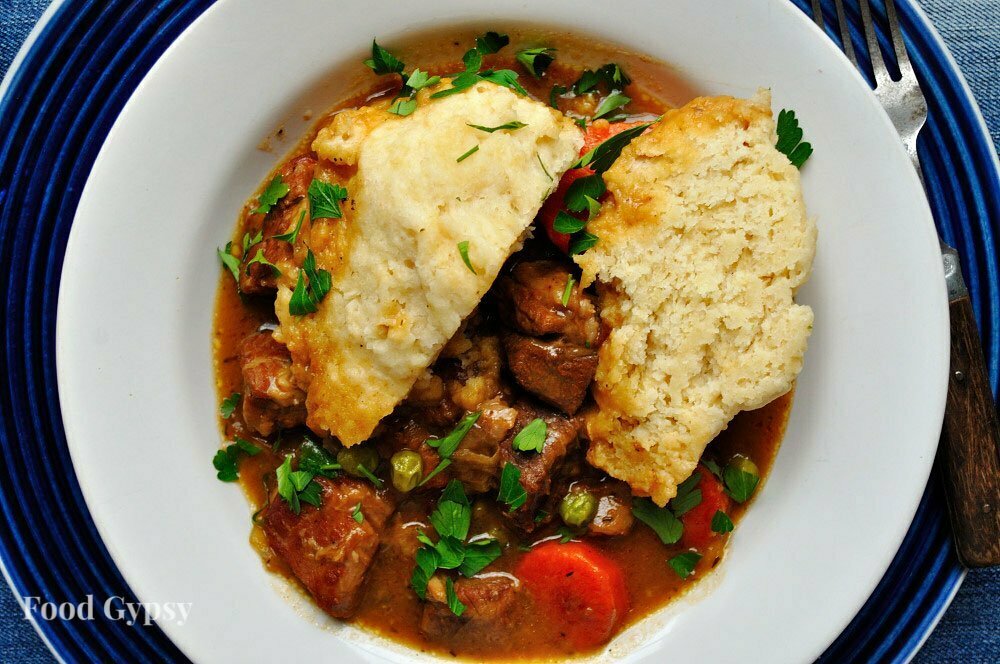
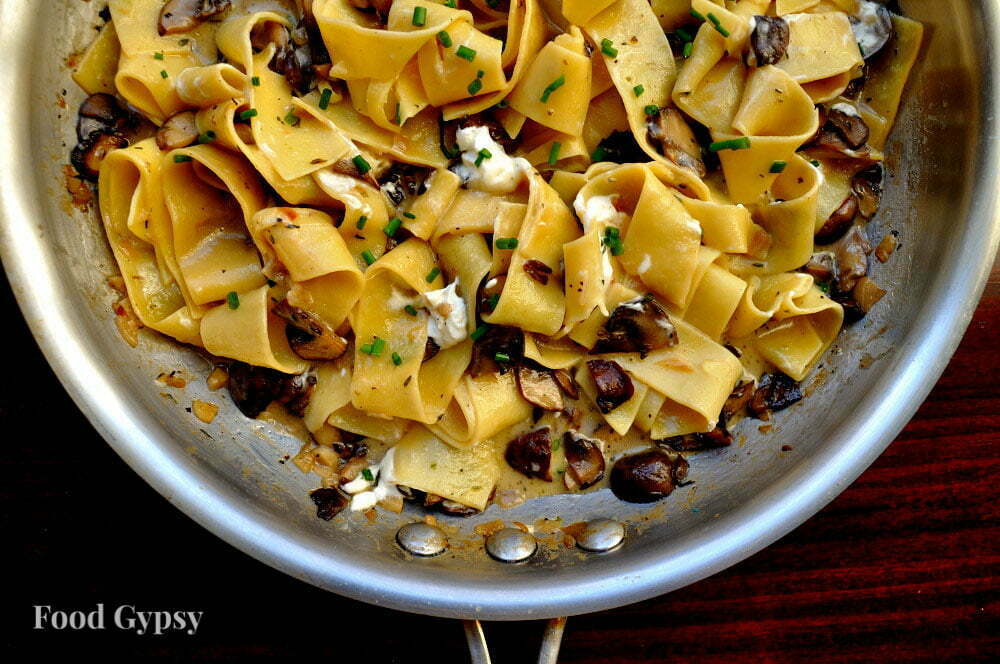
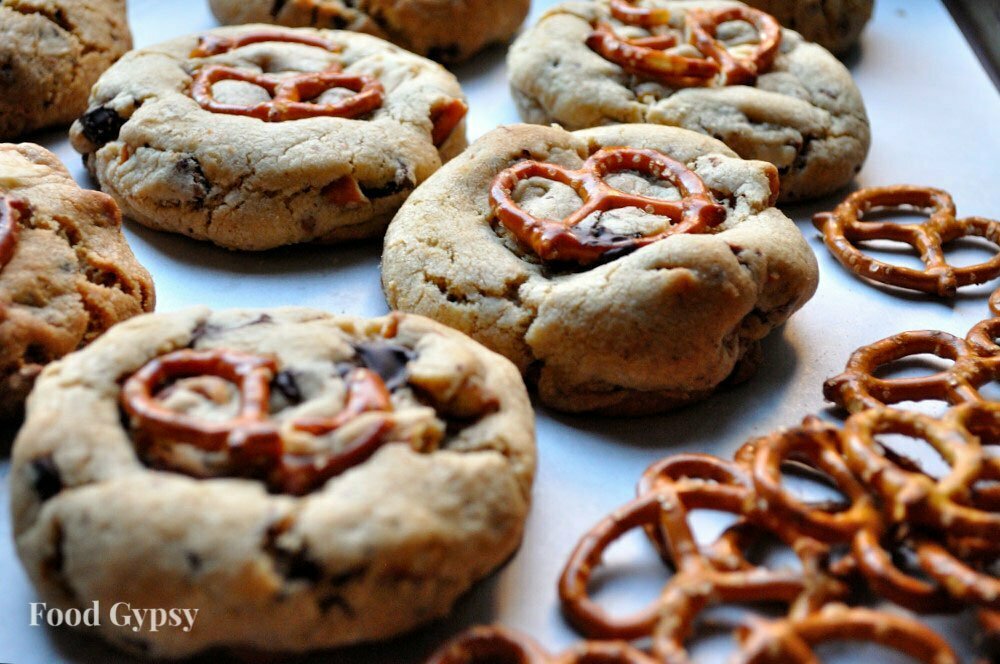
Comments (0)